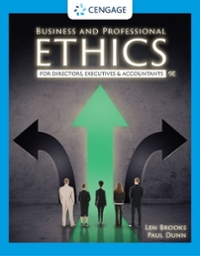Question
Problem 1 (Based on Continuous Random Variables) Historical data at Swift enterprises shows that each sales clerk sells an average of $10,000 worth of dry
Problem 1 (Based on Continuous Random Variables)
Historical data at Swift enterprises shows that each sales clerk sells an average of $10,000 worth of dry cleaner. The population standard deviation is known to be $250. At the beginning of the year, the CEO implemented a policy where clerks who sell less that $9,950 worth of dry cleaner in any given month get fired. Thus far, he has fired 20 sales clerks.
The HR manager believes that this new requirement is unrealistic and is resulting in unnecessary fires. The HR manager has called upon Breezy Analytics to help investigate the fairness of this measure. a. The policy would be considered fair or reasonable if the probability of a sales clerk falling below the threshold of $9,950 is less than 15.15%.
A) Using your standard normal distribution tables (Z tables) determine the probability that an employee at Swift enterprises sells less than $9,950 worth of dry cleaners.
B) Determine the new threshold value that should be used so that only 15.15% of employees will have sale values that fall below this threshold.
C) What if the HR manager wanted a new threshold value, such that the value of sales of 67% employees are above this threshold.
Step by Step Solution
There are 3 Steps involved in it
Step: 1

Get Instant Access with AI-Powered Solutions
See step-by-step solutions with expert insights and AI powered tools for academic success
Step: 2

Step: 3

Ace Your Homework with AI
Get the answers you need in no time with our AI-driven, step-by-step assistance
Get Started


